3rd Generation of K-Pop Explained: 2012-2019
Discover the 3rd generation K-pop songs (2012-2019) that defined an era with global hits by BTS, EXO, TWICE, and BLACKPINK, shaping the modern K-pop wave.

3rd Generation of K-Pop Explained: 2012-2019
Now that we've provided a brief overview of the four K-Pop generations and their key characteristics, it's time to dive deeper into each one. Let's start by exploring the 3rd Generation, home to iconic groups like BTS, TWICE, and BLACKPINK!
The 3rd generation kpop songs, spanning from 2012 to 2019, marked a golden age in the industry. This era was defined by unprecedented international success, innovative music styles, dynamic fashion trends, and the rise of survival shows that cultivated a new wave of talent. As K-Pop became a global phenomenon, the third generation solidified its place in music history, laying the foundation for future artists.
When Did the 3rd Generation Begin and End?
The third generation of K-Pop is generally recognized as beginning in 2012 and concluding around 2019. This period is marked by the debut of

several key groups that would come to define the era, including
EXO,
BTS, and TWICE. The year 2012 is often cited as the starting point because it witnessed the debut of EXO, a group that would go on to achieve massive popularity both in South Korea and internationally.
The end of the 3rd generation kpop songs is less clearly defined, but many fans and industry experts agree that it culminated around 2019. This year saw the rise of fourth-generation groups like ITZY and TXT, signaling a shift in the industry. Additionally, 2019 was a year of significant change for many third-generation groups, with some members leaving or enlisting in the military, marking the end of an era.
What Defines the 3rd Generation?
Several key factors define the third generation of K-Pop:
-
Global Expansion: The third generation is characterized by the rapid expansion of K-Pop beyond South Korea. With the rise of social media platforms like YouTube, Twitter, and Instagram, K-Pop groups were able to reach international audiences like never before. This generation saw the first K-Pop acts to truly break into the Western market, with BTS leading the charge.
-
Diversity of Concepts: Third-generation groups are known for their diverse concepts, ranging from the cute and bubbly to the dark and edgy. Groups like Red Velvet, known for their dual concepts (Red being their brighter, poppier side and Velvet representing their more mature, R&B-inspired side), exemplify this trend. This era also saw the rise of groups with more narrative-driven concepts, such as VIXX, who were known for their dark and theatrical concepts.
-
High Production Value: The 3rd generation kpop songs saw a significant increase in production value, both in terms of music videos and live performances. Music videos became more cinematic, with elaborate sets, special effects, and intricate choreography. Live performances also became more polished, with advanced stage design, lighting, and even augmented reality being used to create immersive experiences.
-
Fan Engagement: The third generation is also defined by a new level of fan engagement. Social media allowed for real-time interaction between idols and fans, leading to the rise of fan communities known as “fandoms.” These fandoms played a crucial role in promoting their favorite groups, organizing streaming events, and even contributing to their success in international markets.
-
Social Media Influence: The rise of social media platforms like Twitter, Instagram, and YouTube played a crucial role in the 3rd generation's global success. K-Pop idols and their agencies harnessed the power of these platforms to engage directly with international fans, fostering a sense of community and loyalty.
- Multilingualism: To appeal to a global audience, many 3rd generation idols were either fluent in or learned multiple languages. This linguistic versatility allowed them to connect with fans from different cultures and perform in various international markets.
International Breakthroughs of the 3rd Generation
The third generation of K-Pop was characterized by its unprecedented international success. While the groundwork had been laid by second-generation groups like BIGBANG and Girls’ Generation, it was the third generation that truly broke into the global market.
BTS: The Global Phenomenon
Perhaps the most significant international breakthrough of the 3rd generation was BTS. Debuting in 2013 under Big Hit Entertainment, BTS quickly rose to prominence with their socially conscious lyrics, powerful performances, and strong connection with fans, known as ARMY. BTS became the first K-Pop group to perform at the American Music Awards in 2017, and they have since achieved numerous milestones, including topping the Billboard Hot 100 and being nominated for Grammy Awards.
EXO: Conquering the Chinese Market
EXO, which debuted in 2012 under SM Entertainment, was initially divided into two subunits: EXO-K and EXO-M, targeting the Korean and Chinese markets, respectively. EXO became a massive success in both markets, particularly in China, where they dominated music charts and received numerous awards. Their 2015 album EXODUS became the best-selling album in Korea since 2001, further cementing their status as one of the top 3rd generation kpop groups.
BLACKPINK: Queens of YouTube
BLACKPINK, a girl group under YG Entertainment that debuted in 2016, quickly became a global sensation with their catchy songs and high-energy performances. They became the first K-Pop girl group to perform at Coachella in 2019, and their music videos consistently broke records on YouTube for the most views in 24 hours. BLACKPINK's international appeal is evident in their collaborations with Western artists like Dua Lipa and Selena Gomez.
TWICE: The Nation's Girl Group
TWICE, formed by JYP Entertainment through the survival show Sixteen in 2015, quickly became one of the most popular girl groups in South Korea and Japan. 3rd generation kpop songs, vibrant concepts, and strong visuals made them a favorite among fans. TWICE's Japanese releases consistently topped the Oricon charts, solidifying their status as a leading group in the Japanese market.
Music Styles of the 3rd Generation
The third generation of K-Pop is characterized by a wide variety of music styles, reflecting the diversity of the groups and their concepts.
-
Pop and Dance: Pop and dance music remained a staple in the third generation, with many groups continuing to produce catchy, upbeat songs that were perfect for choreography. TWICE, for example, became known for their infectious pop hits like "Cheer Up" and "TT," which featured bright, energetic melodies and memorable dance routines.
-
Hip-Hop and R&B: The third generation also saw a rise in the popularity of hip-hop and R&B within K-Pop. BTS incorporated elements of hip-hop into their music from the beginning, with songs like "No More Dream" and "We Are Bulletproof Pt.2." Other groups, such as GOT7 and MONSTA X, also experimented with hip-hop and R&B sounds, creating a more diverse musical landscape.
-
Electronic and EDM: Electronic music and EDM also became more prominent during the third generation. Groups like EXO and NCT incorporated electronic elements into their music, creating a futuristic sound that set them apart from their predecessors. EXO's "Monster" and NCT's "Cherry Bomb" are prime examples of this trend.
-
Ballads and Vocal Performance: While upbeat dance tracks dominated the charts, ballads and vocal performances remained an important part of K-Pop. Groups like EXO and SEVENTEEN released emotionally charged ballads that showcased their vocal talents. These ballads often served as the closing tracks on albums, providing a contrast to the high-energy title tracks.
-
Fusion of Genres: Perhaps one of the most defining characteristics of the third generation's music is the fusion of genres. Many groups experimented with blending different musical styles to create a unique sound. Red Velvet's "Bad Boy," for example, combines elements of R&B, pop, and hip-hop, while BTS's "Blood Sweat & Tears" incorporates dance, electronic, and moombahton influences.
Fashion of the 3rd Generation
Fashion in the 3rd generation kpop songs played a significant role in defining the identities of both the groups and the era as a whole. From elaborate stage outfits to trendsetting streetwear, fashion became an integral part of K-Pop's appeal.

-
Concept-Based Fashion: One of the defining aspects of third-generation fashion was its close alignment with the concepts of each group's comebacks. For example, EXO's "Monster" era featured dark, rebellious fashion with military-inspired outfits, while TWICE's "Likey" era embraced bright, youthful clothing that reflected their cheerful concept. This attention to detail helped to create a cohesive image for each comeback, making the fashion as memorable as the music.
-
Streetwear and Casual Styles: Streetwear and casual styles became increasingly popular during the third generation. Groups like BTS and GOT7 often wore streetwear-inspired outfits in their music videos and performances, incorporating oversized hoodies, ripped jeans, and sneakers into their looks. This style resonated with international fans, as it was more accessible and relatable than some of the more extravagant stage outfits.
-
Gender-Neutral Fashion: The third generation also saw a rise in gender-neutral fashion, with idols often wearing clothing that blurred traditional gender lines. G-Dragon of BIGBANG, who continued to be influential during this era, was known for his androgynous style, often wearing skirts, oversized blazers, and bold accessories. This trend was also reflected in the fashion choices of groups like EXO and NCT, who often wore clothing that challenged traditional gender norms.
-
Luxury Brands and High Fashion: As K-Pop gained international attention, many idols began collaborating with luxury fashion brands. BLACKPINK, in particular, became known for their association with high fashion, with each member representing a different luxury brand. Jennie, for example, became the face of Chanel in South Korea, while Lisa represented Celine. These collaborations helped to elevate the status of K-Pop idols in the global fashion industry.
-
Hair and Makeup Trends: Hair and makeup also played a significant role in defining the fashion of the third generation. Brightly colored hair became a trend, with idols frequently changing their hair color to match the concept of their comebacks. Makeup trends also evolved, with idols often sporting bold eye makeup, glossy lips, and dewy skin. These beauty trends were quickly adopted by fans, further blurring the lines between K-Pop and global fashion.
Rise of Survival Shows
The 3rd generation kpop songs also saw the rise of survival shows, which played a significant role in shaping the industry. These shows, which often pitted trainees against each other in a competition to debut as idols, became a popular way for entertainment companies to introduce new groups.

-
"Produce 101": One of the most influential survival shows of the third generation was "Produce 101." The show, which first aired in 2016, brought together 101 trainees from various entertainment companies to compete for a spot in a temporary project group. The first season of the show produced the girl group I.O.I, while the second season produced the boy group Wanna One. Both groups achieved massive success during their short-lived careers, and the "Produce 101" series went on to become one of the most popular survival show franchises in K-Pop history.
-
"Sixteen" and TWICE: Another notable survival show from this era was "Sixteen," which aired in 2015. The show was created by JYP Entertainment to determine the members of their new girl group, TWICE. The show was a success, and TWICE went on to become one of the most popular girl groups of the third generation. "Sixteen" set a precedent for other companies to use survival shows as a way to debut new groups.
-
"WIN: Who Is Next" and "Mix & Match": YG Entertainment also contributed to the rise of survival shows with "WIN: Who Is Next" and "Mix & Match." "WIN," which aired in 2013, pitted two teams of trainees against each other, with the winning team debuting as the boy group WINNER. "Mix & Match," which aired in 2014, followed a similar format and led to the debut of the boy group iKON. Both groups achieved significant success and helped to solidify YG Entertainment's place as one of the top entertainment companies in South Korea.
-
"No.Mercy" and MONSTA X: Starship Entertainment also jumped on the survival show trend with "No.Mercy," which aired in 2014. The show featured trainees competing for a spot in the boy group MONSTA X, who went on to become one of the leading groups of the third generation. "No.Mercy" was notable for its intense challenges and emotional moments, which helped to build a strong fanbase for MONSTA X even before their official debut.
-
Impact of Survival Shows: The rise of survival shows during the third generation had a significant impact on the K-Pop industry. These shows provided a platform for trainees to showcase their talents and gain a following before their official debut. They also allowed fans to feel more connected to the idols, as they were able to witness their journey from trainee to debut. However, survival shows also faced criticism for their intense competition and the pressure they placed on young trainees.
Bands that Belong to the 3rd Generation
The 3rd generation kpop songs is home to some of the most iconic and influential groups in the industry's history. These groups not only achieved massive success in South Korea but also played a crucial role in expanding K-Pop's global reach.
BOY GROUPS:
GIRL GROUPS:
The 3rd generation kpop songs, spanning from 2012 to 2019, was a transformative era that shaped the industry in numerous ways. This period saw the rise of some of the most iconic groups in K-Pop history, the global expansion of the genre, and the introduction of new music styles and fashion trends. The third generation also played a significant role in solidifying K-Pop's place on the global stage, paving the way for future generations to continue pushing boundaries and breaking records.
As we look back on the third generation, it's clear that this era will be remembered as a golden age in K-Pop history. The groups that emerged during this time not only achieved unprecedented success but also left a lasting impact on the industry, influencing the direction of K-Pop for years to come. Whether you're a longtime fan or new to the genre, the third generation of K-Pop offers a wealth of music, fashion, and culture to explore and appreciate.




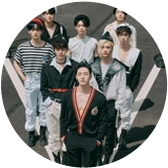
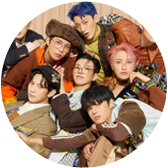
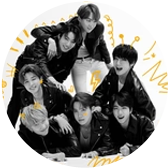
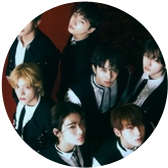
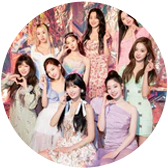
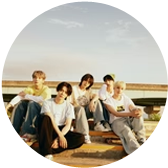
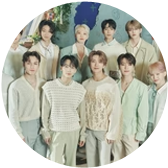
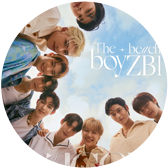

 several key groups that would come to define the era, including
several key groups that would come to define the era, including 









